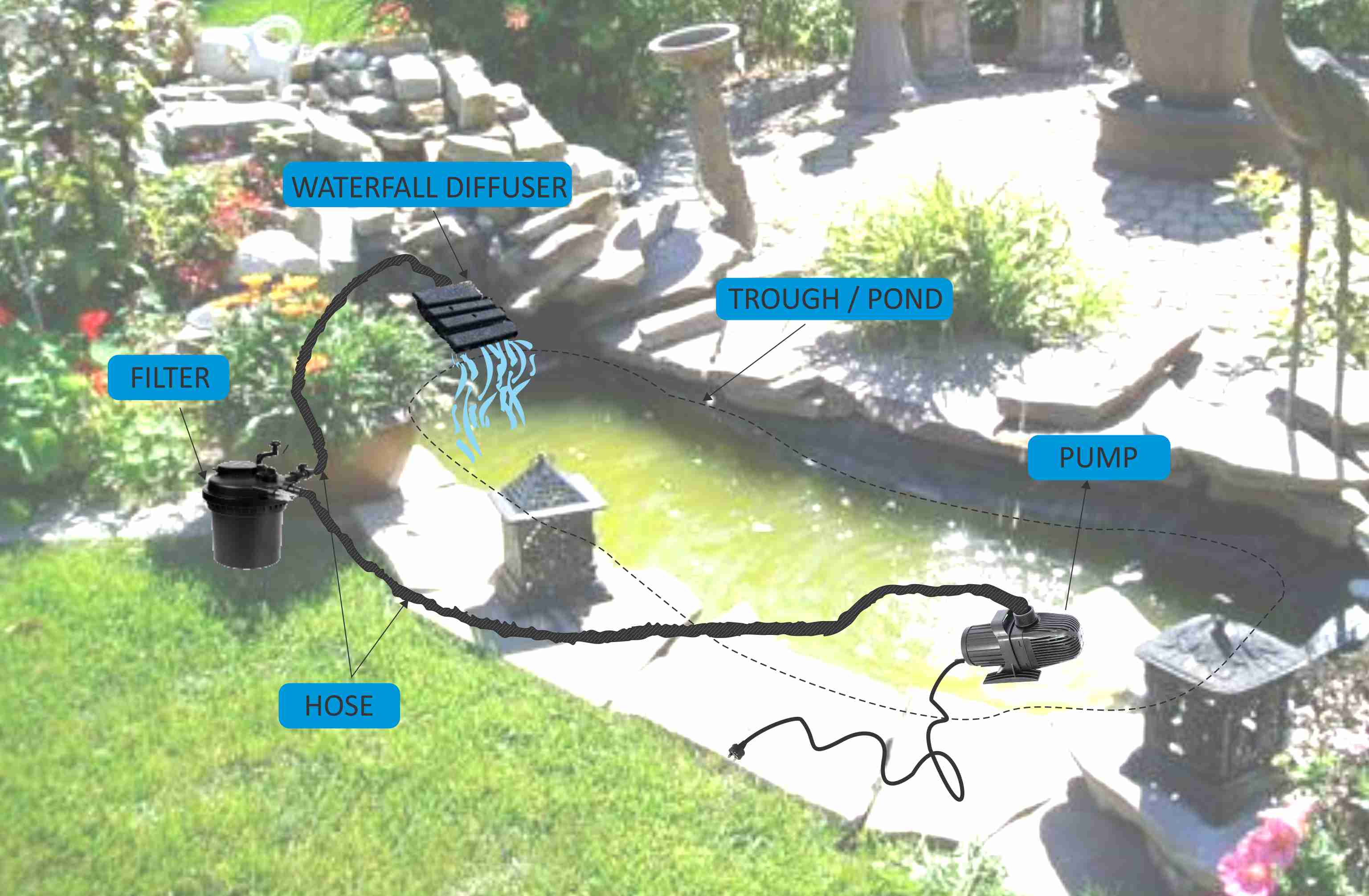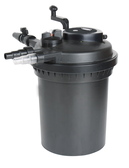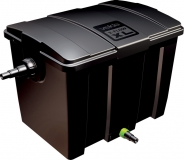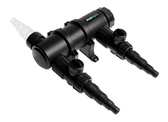Selecting your pond filtration system
Whether you are a beginner or experienced water gardener, you will probably have one objective and that is a clear, clean, healthy pond. Ponds will be affected by various factors - unconsumed fish food, decomposing vegetation, and fish excrement. If these pollutants are allowed to accumulate in time they will become harmful to your fish and produce green unsightly water.
The use of biological filtration will remove these toxins (nitrate ammonia) and provide good quality water. Filters for ponds usually combine both biological and mechanical filtration.
Mechanical filtration removes the solid particles in the water by brushes or filter matting. Biological filtration is the converting of toxic pollutants in the water by the bacteria living in the bio media.
The Most Important Points For Filtration
- Equipment & materials of a capable size: Filter sizing is based on the pond volume calculations, and fish stocking densities. Always go bigger to get better performance.
- Correct equipment: Remember when making your selection that if your pond volume is close to the maximum capacity of the filter in mind then we suggest you choose the next model up. If unsure, always upsize. Look for filtration with product and clear water guarantees.
- Completely circulating water: All the pond water needs to pass through the bio-filter. The pump needs to be at one end and the bio-filter at the other.
- Continuous filtration: Pond filtration needs to run 24 hours a day. Bacteria in the biological filter will die if it is without water and oxygen. Bacteria takes 4-6 weeks to fully establish.
- Don’t overstock pond: Over stocking of fish will strain the pond filtration system. Ideal stocking levels = 50cm of fish per 1,000 litres. Remember to allow for the fish to grow.
- Use water plants: Water plants are vital in maintaining the balance in the ponds eco system. Plants remove nitrates, provide shade and oxygen. If not in your pond try to use water plants in a stream or spill.
- Don’t over feed fish: Pond fish cannot eat a great quantity of food at one time therefore little and often must be the rule. Overfeeding increases the danger of polluting the pond. Remember fish will consume less food in colder months.
- Remove/restrict pollutants & debris: Leaves, debris and fertiliser allowed to enter the pond will all breakdown into ammonia, which is toxic to live stock. Remember to remove pollutants or/and use a pond net to cover the pond.
Typical Pump + Pressurized Filter + Waterfall Set Up

Types Of Filtration
Type 1 - Pressurized Biological Filters

Pressurised bio-filters use the same mechanical then biological technology but have the advantage of being fully sealed. This means the filter can be placed above or below the water level and can be put in-line between the pump and water feature.
Type 2 - External Biological Filters

External biological filters come in all shapes, sizes and configurations but all function in similar ways. All incorporate mechanical filtration to remove solid particles from the water and then biologically filter through bacteria in bio media. External bio-filters are gravity fed. This means the water is pumped into the box and trickles through the filter and flows out under gravity. Consequently the filters must be set at the highest point in the circuit i.e. above the waterfall, which results in the outlet from the filter being elevated above the water surface of the pond/waterfall.
Type 3 - UV Clarifiers/Sterilisers

UV (ultraviolet) clarifiers can clear a green pea soup pond in a very short space of time. UV clarifiers use ultra violet radiation from the lamp to kill the suspended algae making the algae cells clump together so that these dead algae can be mechanically filtered (adding separately Option 1 or 2 above). When UV clarification is used in combination with a bio-filter, UV lamps inside the unit have to be replaced after about 8000 to 12000 hours of running (approx 12-18 months). Most pond keepers try to control algae by using chemicals, this is can be an expensive and labourious solution that may have side effects on fish and plant life.

Need more assistance? Click here to our contact page or call 1300 238 288.
Recent Posts
-
Projecting Curtain Effect vs Wall Wash Effect Water Walls: Which One is Right for You?
Projecting Curtain Effect vs Wall Wash Effect Water Walls: Which One is Right for You? Water walls a …28th Nov 2024 -
Pondmax PV350L vs OASE Pondovac 4
The PondMAX PV350L and the OASE PondoVac 4 are both pond vacuums designed for maintaining clean and …30th Oct 2024 -
Unleashing Design Potential with Multi-Unit Water Wall Spillways
Transform your environment with the captivating allure of a custom water wall using mul …3rd Oct 2024



